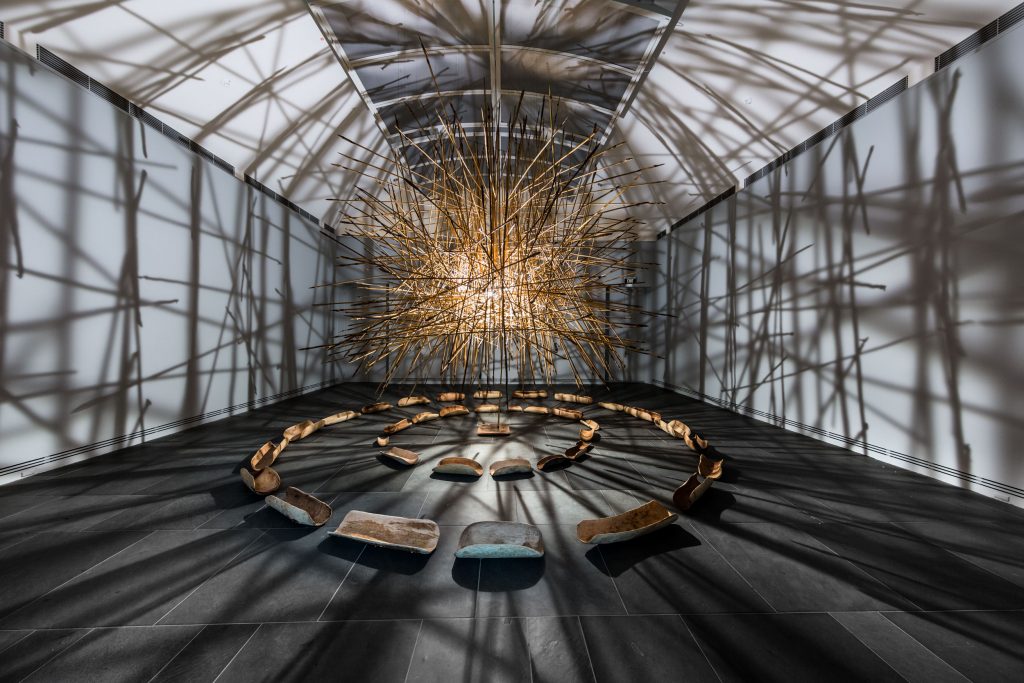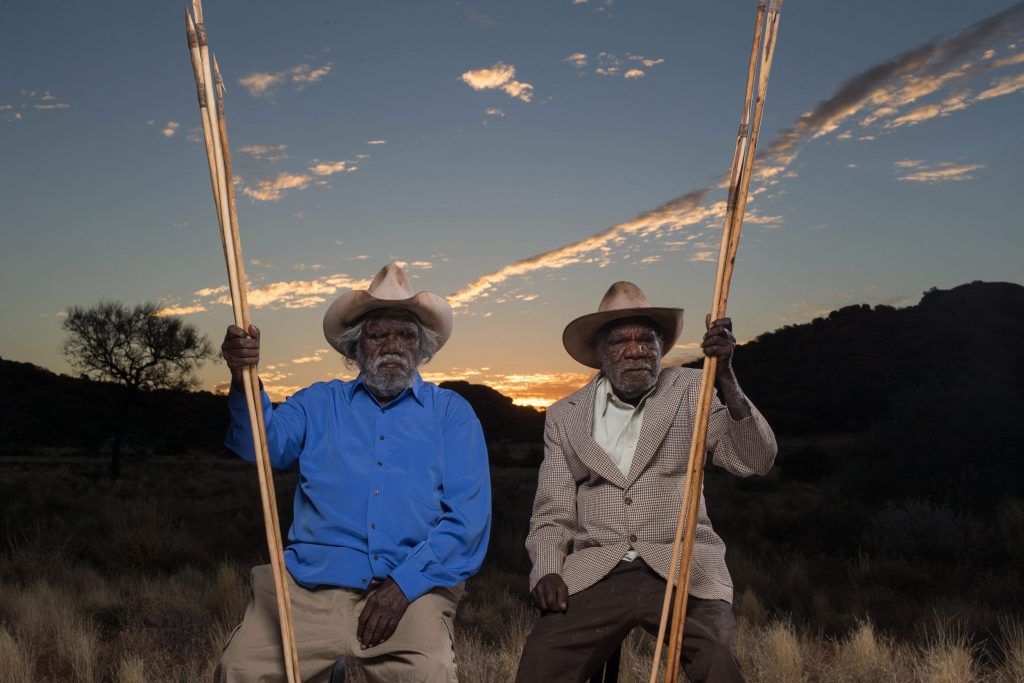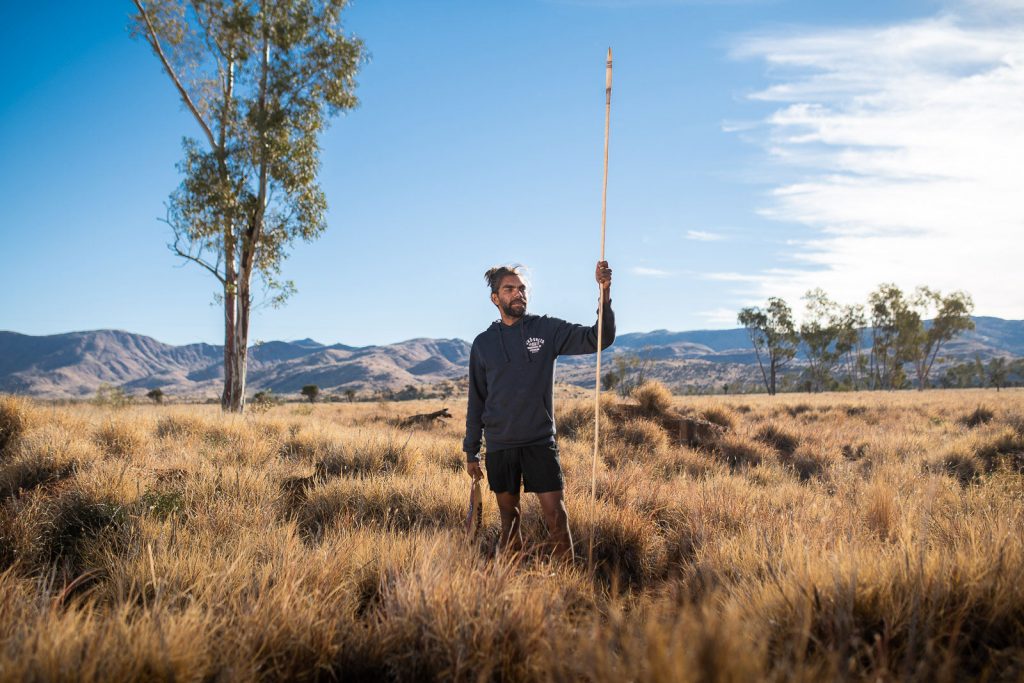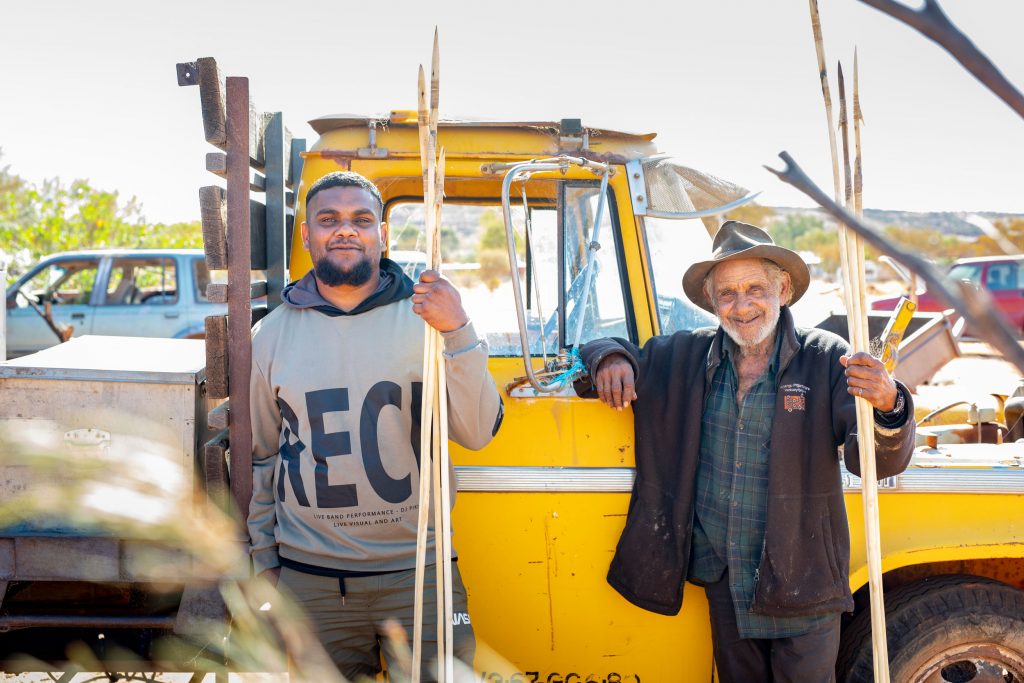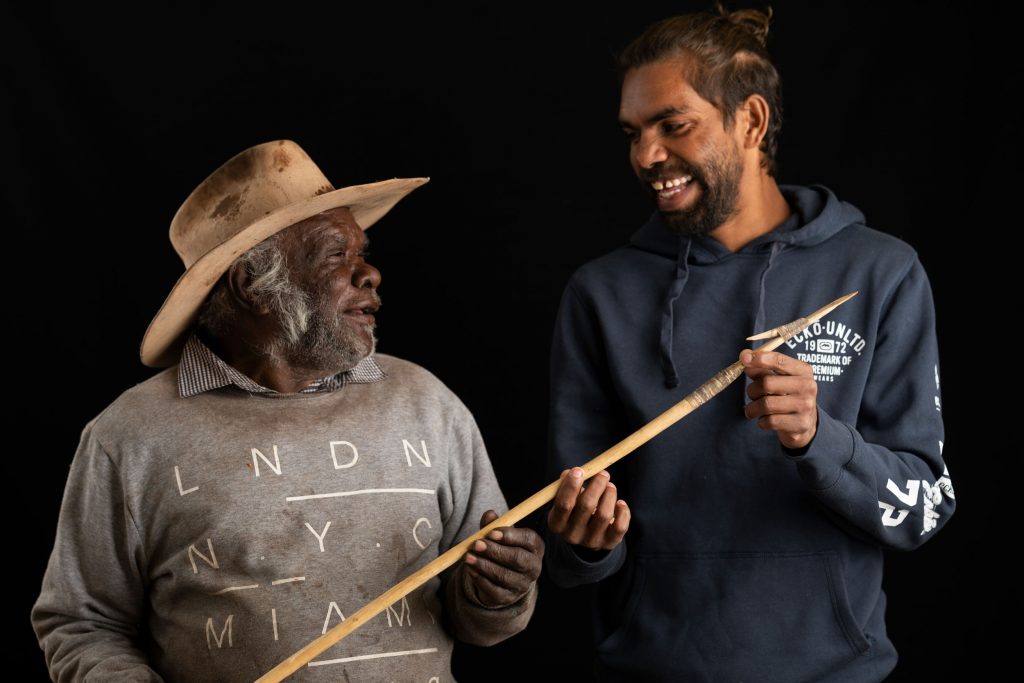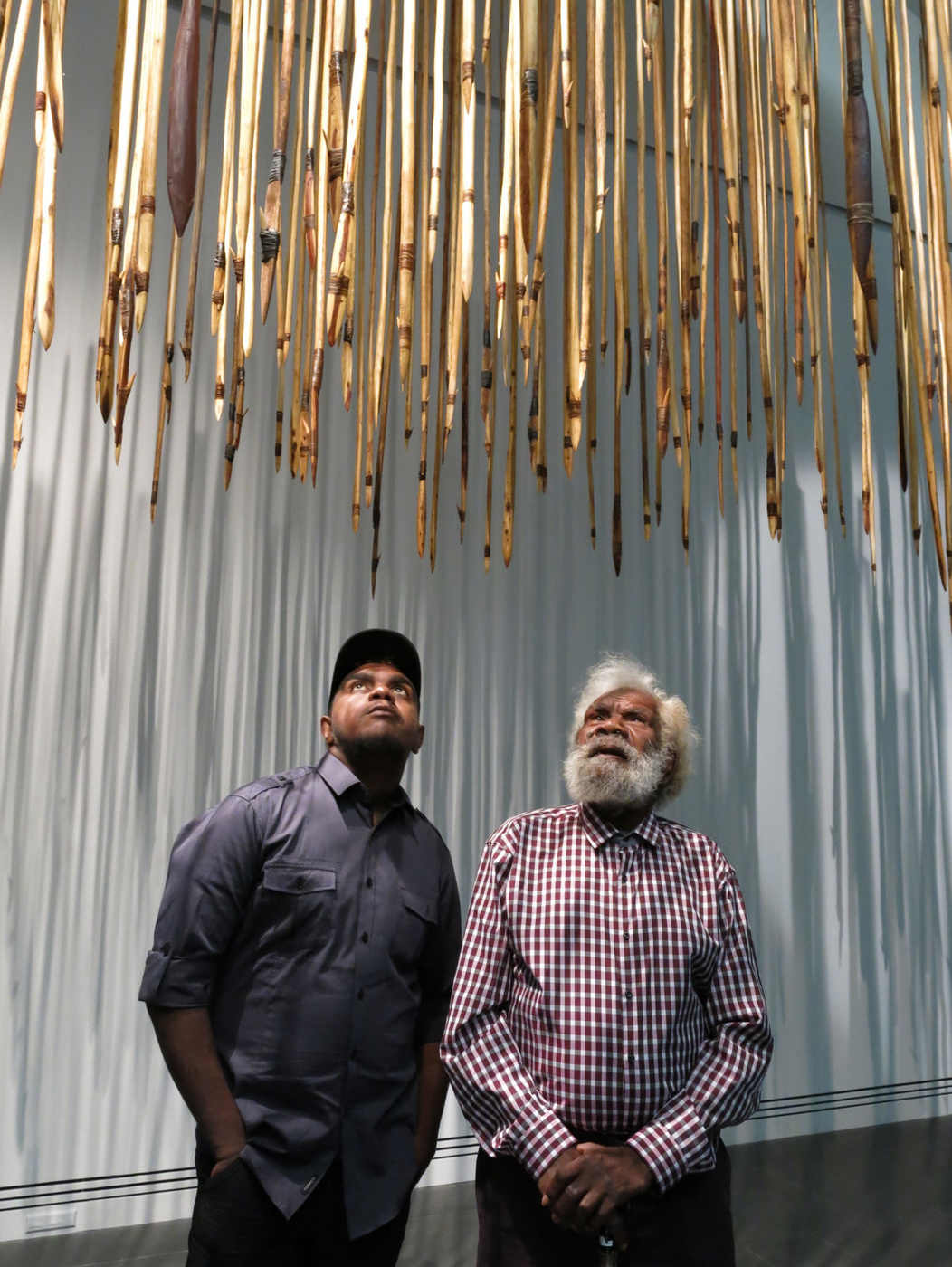
Kulata Tjuta
Kulata Tjuta was established at Tjala Arts in Amata in 2010, when Willy Kaika Burton (1941-2020) alongside Hector Burton (c1937-2017), Mick Wikilyiri, Frank Young, Ray Ken (c1940-2018), Barney Wangin (1939-2012) and Tiger Palpatja (c1920-2012) formally conceived of the project. From that point forward, Anangu leaders across the region started joining the Kulata Tjuta project, starting with Gordon Ingkatji (c1930-2016) and Rupert Jack from Ernabella Arts; then Witjiti George and Taylor Cooper from Kaltjiti Arts; Kunmanara (Peter) Mungkuri (1946-2021) and Alec Baker from Iwantja Arts, Kunmanara Williams (1952-2019), Sammy Dodd and Kunmanara Martin (1950-2018) from Mimili Maku Arts; Keith Stevens and Ginger Wikilyiri from Tjungu Palya and Jimmy Donegan from Ninuku Arts.
It has since grown to include over 200 Anangu men of three generations from across the APY Lands. The artistic outcomes take the form of large-scale, multi-disciplinary installations which incorporate film, sound and live performance. For some of the previous iterations of Kulata Tjuta, Anangu artists have collaborated with renowned Indigenous artists such as Munaldjali/Nunukul composer David Page (1961-2016) and Wiradjuri/Kamilaroi visual artist Jonathan Jones. There have been five major artistic outcomes in partnership with Australian institutions, including the National Gallery of Australia, Monash University and the Art Gallery of South Australia (2014 Adelaide Biennial of Australian Art and 2015 and 2017 TARNANTHI Festival of Contemporary Indigenous and Torres Strait Islander Art). A sixth installation and first international showcase, Kulata Tjuta: Kupi Kupi was exhibited in 2019 at Fondation Opale in Switzerland.


